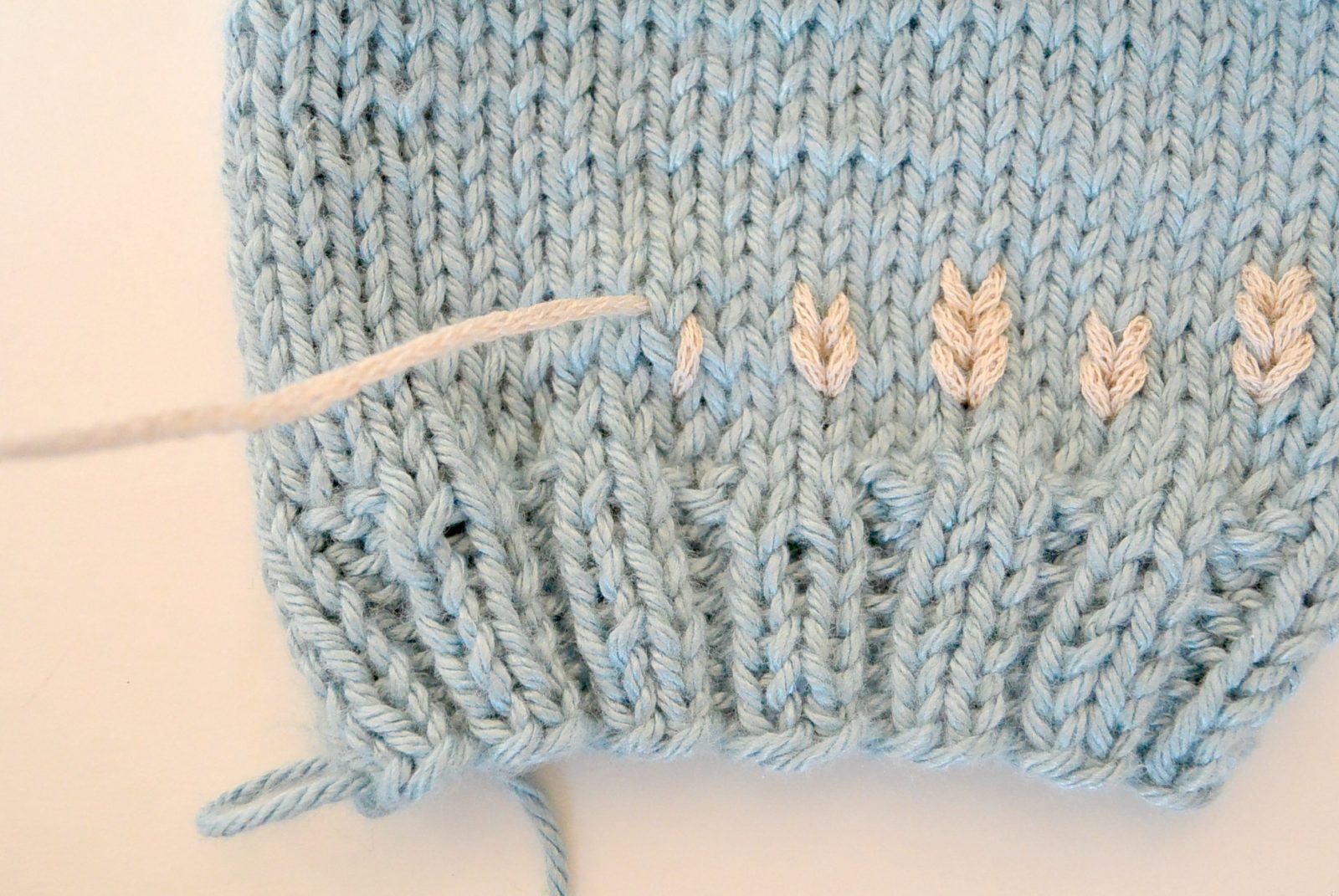

Tip #2: work back and forth in rows if possible. Coming up at the bottom of the V on the next row means I’m working at the top of a V I’ve already covered Keep working stitches this way: up through the point, around the top, then back down through the point Now follow your design! To work the next stitch, move to the next V you want to cover and begin again at the bottom point. Duplicate stitch made! You’ve successfully covered the stitch on your knit item with a new color. Pull your yarn through (snug, not tight!). Insert your needle back through the point of the V Now go back to where you started and insert the needle in the bottom point of the V again, this time from the front. Pull the yarn through so it rests on top of the stitch you are covering Pull the yarn through so that it’s snug over the stitch you’re tracing (hello duplicate stitch!), but not tight enough to distort the stitches. This book has technique instructions, and 3 large designs for sweaters, etc. Go behind the bottom of the stitch above to create the top of your V
DUPLICATE STITCH KNITTING FREE
Insert your needle behind that next V just like your stitch does and come out on the other side (I’m left handed, so I’m following the left leg of the V and going from left to right with my needle– feel free to go opposite if it feels more natural). Next, follow one leg of the V up to where it runs into the stitch above it. Pull your yarn through, leaving a 4-6″ tail to sew in later. See how it’s made up of a ton of V’s? Thread your needle and starting from the back, bring your needle up through the bottom of one of the V’s. To start, take a look at your knitted piece. After only a few stitches, your yarn starts to look less than fresh and that means your hard work can’t shine like it should.

If you’re like me, you want as few ends to sew in as possible so you’ll think, yeah, let’s use a long enough piece to do all the stitches. Tip #1: only use a 18-24″ piece of yarn to stitch with at a time. Contrasting yarn that is similar in weight as your knitted piece or even bigger (just don’t use smaller yarn because it won’t cover the stitches you’re tracing).A knitted something (could even be a ready-to-wear piece!).You start by knitting your base piece (hat, sweater, bag, whatever it may be) and then add colored stitches on top of your knitting. I’m getting better at knitting with multiple colors, but then I had an idea to make a baby hat with a single rainbow design, and that wasn’t going to work well with regular stranded knitting.Įnter duplicate stitching. Let’s move on to something else! I’ve been seeing the duplicate stitch around and got excited about the color possibilities it opened up in my knitting. So it’s been quite the month (or two), but you already knew that. Weave in using a combination of duplicate stitch and weaving under the floats.Ĭut your tails with about a half inch of extra yarn so that when you pull on and wash your socks, the tails won’t pop out to the right side of the fabric.Duplicate stitch can be used to add a design to your knitting Marly Bird shows you how this simple hand-sewn stitch is applied to.

DUPLICATE STITCH KNITTING HOW TO
That way you’ll be able to keep everything a bit neater. Learn how to add customized monograms to your knits with the magic of duplicate stitch. Weave your embroidery yarn under the floats already there on the wrong side of the work. Crossed legs look a little funny and don’t pop as much. If you’re working from right-to-left, keep it that way the whole time to avoid crossing the legs of your duplicate stitches. They should be a bit looser than the stitches underneath to really pop. If you pull too tightly, your duplicate stitches will disappear or be hard to see.

Below is a photo of the results in the real world. Work in the opposite direction, if you want to slant a half duplicate stitch to the left. I also love using duplicate stitch on the wrong side of the fabric to weave in my ends securely. Next, follow the green arrow, sticking your needle down over the bar, and pulling your yarn through to the back between the two stitches on your right. If you like the short, text-only version, here are some tips:ĭuplicate stitch embroidery is just copying the stitches that are already in your knitting and embroidering over them. It also includes a bit about how I make little bobbins for all the colours in the Gauge Dye Works self-striping yarn. If you’re wondering how duplicate stitch works, here’s a video tutorial showing you how. My Saxe Point sock pattern has gotten a cheery little makeover for the holidays! I created a new motif for the sock pattern that fits in exactly the same dimensions as the original chart, so you can just swap them for a completely different look.Īs an optional bonus, the chart includes duplicate stitch embroidery to make your socks even more lively.


 0 kommentar(er)
0 kommentar(er)
